Chapter 3. Socialization, Social Interaction and the Social Self
3.1. Theories of Self Development
Danielle’s case underlines an important point that sociologists make about socialization, namely that the human self does not emerge “naturally” as a process driven by biological mechanisms. What is a self? What does it mean to have a self?
The self refers to a person’s distinct sense of identity. It is who a person is for themselves and who they are for others. It has consistency and continuity through time, and an internal coherence that distinguishes people as unique persons. However, there is always something precarious and incomplete about the self. Selves change through the different stages of life. Sometimes they do not measure up to the ideals people hold for themselves or others, and sometimes they can be wounded by people’s interactions with others or thrown into crisis. It is not only what a person has done in their lives, but how they imagine themselves to be. Clearly, the self does not develop in the absence of socialization, the self is a social product.

Even when the self is alone for extended periods of time (hermits, prisoners in isolation, etc.), an internal conversation goes on that would not be possible if the individual had not been socialized already. The examples of feral children like Victor of Aveyron or children like Danielle who have been raised under conditions of extreme social deprivation attest to the difficulties these individuals confront when trying to develop this reflexive quality of humanity. They often cannot use language, form intimate relationships, or play games. Socialization is not simply the process through which people learn the norms and rules of a society; it is also the process by which people become aware of themselves as they interact with others. It is the process through which people are able to become people in the first place.
Theories of Self Development
When a person is born, they have a genetic makeup and biological traits. However, who they are as human beings develops through social interaction. Many scholars, in both psychology and sociology, have described the process of self development as a means of understanding how that “self” becomes socialized.
Making Connections: Sociological Concepts
Sociology or Psychology: What’s the Difference?
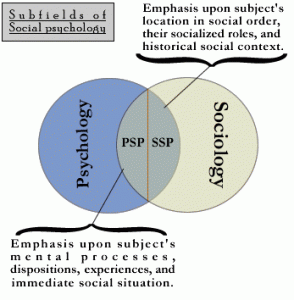
If sociologists and psychologists are both interested in people and their behaviour, how are these two disciplines different? What do they agree on, and where do their ideas diverge? The answers are complicated, but the distinction is important to scholars in both fields.While both disciplines are interested in human behaviour, psychologists are focused on how the mind influences that behaviour, while sociologists study the role of society in shaping both behaviour and the mind. Psychologists are interested in people’s mental development and how their minds process their world and influence their actions. Sociologists are more likely to focus on how different aspects of social life structure an individual’s relationship with the world. Another way to think of the difference is that psychologists tend to look inward at qualities of individuals’ internal life (mental health, emotional processes, cognitive processing), while sociologists tend to look outward to qualities of individuals’ social context (social institutions, cultural norms, interactions with others) to understand human behaviour.As described in Chapter 1. An Introduction to Sociology, Émile Durkheim (1958–1917) was one of the first to emphasize this distinction in sociological research, when he attributed differences in suicide rates among people to social causes (degree of social integration) rather than to psychological causes (psychopathology, mental health) (Durkheim, 1897). This same approach applies today. For example, a sociologist studying how a couple gets to the point of their first kiss on a date might focus the research on cultural norms of dating, social patterns of romantic activity in history, or the influence of social background on romantic partner selection. How is this process different for seniors than for teens, for example? A psychologist would more likely be interested in the person’s romantic history, psychological type, or the mental processing of erotic desire.The point that sociologists like Durkheim would make is that an analysis of individuals at the psychological level cannot adequately account for social variability of behaviours. The difference in suicide rates of Catholics and Protestants, or the difference in dating scripts across cultures or historical periods, can not be explained at the level of individual psychology. Sometimes sociology and psychology can combine in interesting ways, however. Christopher Lasch’s The Culture of Narcissism (1979) argued that the neurotic personality was a product of an earlier Protestant ethic style of competitive capitalism; whereas, late postindustrial consumer capitalism is conducive to narcissistic personality structures (the “me” society). Theodore Adorno and his colleagues described the features of an authoritarian personality that was susceptible to the appeals of fascistic political formations (Adorno et al., 1950). More recently the “dark triad” personality traits — narcissism (entitled self-importance), Machiavellianism (strategic exploitation and deceit), and psychopathy (callousness and cynicism) — have been shown to predict white nationalist (“alt-right”) political beliefs and behaviours (Moss & O’Connor, 2020).
Charles Horton Cooley
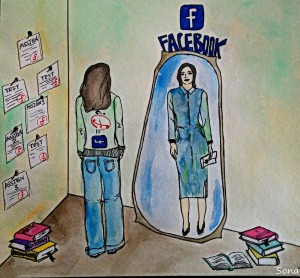
One of the pioneering contributors to sociological perspectives on self-development was the American sociologist Charles Horton Cooley (1864–1929). Cooley asserted that people’s self understanding is constructed, in part, by their perception of how others view them — a process termed “the looking glass self” (Cooley, 1902).According to Cooley, people base their self-image on what they think other people see. People imagine or project how they must appear to others, then react to this speculation. They don certain clothes, prepare their hair in a particular manner, wear makeup, use cologne, and the like — all with the notion that their presentation of themselves is going to affect how others perceive them. They anticipate a certain reaction, and, if lucky, they get the one they desire and feel good about it.Cooley believed that the sense of self is not based on an internal source of individuality therefore. Rather, people imagine how they look to others, draw conclusions based on others’ reactions, and then develop their personal sense of self. In other words, other people’s reactions are like a mirror in which the self is reflected. People live a mirror image of themselves. As he put it, “The imaginations people have of one another are the solid facts of society” (Cooley, 1902).The self or “self idea” is thoroughly social. It is not an expression of the internal essence of the individual, or of the individual’s unique psychology which emerges as the individual matures. It is based on how people imagine they appear to others. It is not how the self actually appear to others but the self’s projection of what others think or feel towards it. This projection defines how people feel about themselves and who they feel themselves to be. The development of a self, therefore, involves three elements in Cooley’s analysis: “the imagination of our appearance to the other person; the imagination of his judgement of that appearance, and some sort of self-feeling, such as pride or mortification” (Cooley, 1902).
George Herbert Mead
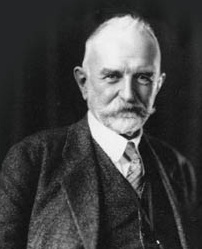
Later, George Herbert Mead (1863–1931) advanced a more detailed sociological approach to the self. He agreed that the self, as a person’s distinct identity, is only developed through social interaction: “[I]t is impossible to conceive of a self arising outside of social experience” (Mead, 1934). However, Mead broke the self down into two components or “phases,” the “I” and the “me.” The “me” represents the part of the self in which one recognizes the “organized sets of attitudes” of others toward the self. It is who we are in other’s eyes: our roles, our “personalities,” our public personas. The “I,” on the other hand, represents the part of the self that acts on its own initiative or responds to the organized attitudes of others. It is the novel, spontaneous, unpredictable part of the self: the part of the self that embodies the possibility of change or undetermined action. The self is always caught up in a social process in which one flips back and forth between two distinguishable phases, the I and the me, as one mediates between one’s own individual actions and individual responses to various social situations and the attitudes of the community. While the self is dependent on our interaction with others, we are not mere reflections of our social world. This flipping back and forth is the condition of our being able to be social.
Erving Goffman
Role performance is how a person expresses his or her role; describing it as a “performance” emphasizes that individuals use certain gestures, manners and “routines” to seek to influence others in their enactments of specific roles. In this sense, individuals in social contexts are always performers. The focus on the importance of role performance in everyday life led Erving Goffman (1922–1982) to develop a framework called dramaturgical analysis. It represents a sociological reflection on the famous line from Shakespeare’s As You Like It, “all the world’s a stage, and all the men and women merely players.”
Goffman recognized that people played their roles and engaged in interaction theatrically, often following common social scripts and using props and costumes to support their roles. For example, he notes that simply wearing a white lab coat brings to mind in the observer stock images of cleanliness, modernity, scrupulous exactitude and authoritative knowledge. In England in the 1950s, even chimney sweeps and perfume clerks wore white lab coats as props “to provide the client with the understanding that the delicate tasks performed by these persons [would] be performed in … a standardized, clinical confidential manner” (Goffman, 1959). Whether the perfume clerk was clinically competent or not, the lab coat was used to bolster the impression that he or she was. Today, even without the lab coats, an analogous repertoire of props, sets and scripts are used to convey the clean, clinical, and confidential tasks of the perfume clerk.
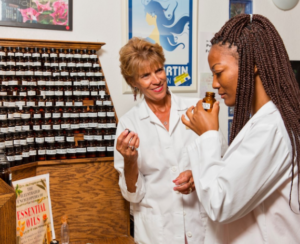
The audience of a performance is not passive however. The audience also projects a definition of the situation through their responses to the performer. In general, the audience of a performance tries to attune their responses as much as possible so that open contradiction with each other or the performer does not emerge. The rules of tact dictate that the audience accommodates the performer’s claims and agrees to overlook minor flaws in the performance so that the encounter can reach its conclusion without mishap.
As everyone who has been in an awkward social situation knows, the stakes of mutual accommodation in social interactions are high. Events that contradict, discredit or throw doubt upon the performer threaten to disrupt the social encounter. When it happens, this results in a kind of micro-level anomie or normlessness, which is characterized by a general uncertainty about what is going to happen and is usually painful for everyone involved.
When these disruptive events occur, the interaction itself may come to a confused and embarrassed halt. Some of the assumptions upon which the responses of the participants had been predicated become untenable, and the participants find themselves lodged in an interaction for which the situation has been wrongly defined and is now no longer defined. At such moments the individual whose presentation has been discredited may feel ashamed while the others present may feel hostile, and all the participants may come to feel ill at ease, nonplussed, out of countenance, embarrassed, experiencing the kind of anomie that is generated when the minute social system of face-to-face interaction breaks down (Goffman, 1959).
Therefore the logic of social situations, whatever their particular content or participants, dictates that it is in the interest of the performer to control the conduct and responses of the others through various defensive strategies or impression management, while it is in the interest of the audience to accommodate the performance as far as is practicable through various protective practices (e.g. tact, willful ignorance, etc.).
As a result, individuals are continually obliged to manage the impression they are making on the others, often using the same type of “props” and “lines” as an actor. Social interactions are governed by preventative practices employed to avoid embarrassments. Moreover, because it can be unclear what part a person may play in a given situation, he or she has to improvise his or her role as the situation unfolds. Each situation is a new scene, and individuals perform different roles depending on who is present. The emphasis in Goffman’s analysis, as in symbolic interactionism as a whole, is that the social encounter, and social reality itself, is open and unpredictable. It relies on a continuous process of mutual interpretation, of signs given and signs received. Social reality is not predetermined by structures, functions, roles, or history but often draws on these in the same way actors draw on background knowledge and experience in creating a credible character.
The implications of Goffman’s dramaturgical approach are that one is always playing a role–the self is never truly singular or authentic in Goffman’s view. The self is just a collection of roles that we play out for different people in different situations. Think about the way you behave around your coworkers versus the way you behave around your grandparents versus the way you behave with a blind date. Even if you’re not consciously trying to alter your personal performance, your grandparents, coworkers, and date probably see different sides of you. Back stage or front stage, the self is always an artifact of the ongoing stratagems of accommodation and impression management involved in the social interaction with particular persons. The self is on one side “an image pieced together from the expressive implications of the full flow of events in an undertaking,” and on the other, “a kind of player in a ritual game” (Goffman, 1972). The self is essentially a mask.
It is probably no mere historical accident that the word person, in its first meaning, is a mask. It is rather a recognition of the fact that everyone is always and everywhere, more or less consciously, playing a role… It is in these roles that we know each other; it is in these roles that we know ourselves (Park quoted in Goffman, 1959)
Goffman’s point here is not that individuals are completely inauthentic or phony. “In so far as this mask represents the conception we have formed of ourselves—the role we are striving to live up to—this mask is our truer self, the self we would like to be” (Goffman, 1959).
The Socialization of Gender

How do girls and boys learn different gender roles? Gender differences in the ways boys and girls play and interact develop from a very early age, sometimes despite the efforts of parents to raise them in a gender neutral way. Little boys seem inevitably to enjoy running around playing with guns and projectiles, while little girls like to study the effects of different costumes on toy dolls. Peggy Orenstein (2012) describes how her two-year-old daughter happily wore her engineer outfit and took her Thomas the Tank Engine lunchbox to the first day of preschool. It only took one little boy to say to her that “girls don’t like trains!” for her to ditch Thomas and move on to more gender “appropriate” concerns like princesses. If gender preferences are not inborn or biologically hard-wired, how do sociologists explain them?
As the Thomas the Tank Engine example suggests, doing gender — performing tasks based upon the gender assigned by society — is learned through interaction with others in much the same way that Mead and Cooley described for socialization in general. Children learn how to do gender through direct feedback from others, particularly when they are censured for violating gender norms. Gender is in this sense a social performance and an accomplishment rather than an innate trait (West and Zimmerman, 1987). If a child successfully performs an activity like a boy or a girl “should,” they are accepted or rewarded, but if they fail, they are often corrected or get disapproving feedback. Doing gender therefore takes place through the child’s developing awareness of self through their interaction with others. In the Freudian model of gender development, children become aware of their own genitals, and spontaneously generate erotic fantasies and speculations whose resolution leads them to identify with their mother or father. Whereas in the sociological model, it is adults’ awareness of, and gendered interpretation of the meaning of, a child’s genitals that leads to gender labeling and reinforcement of gender roles.
West and Zimmerman (1987) emphasize that doing gender, whether as children or adults, involves ongoing, routinized work to present a credible and accepted performance. This is an interactive process that could be discredited if not performed well or unambiguously. Successful displays of endurance, strength, and competitive spirit in sport provide a typical demonstration of masculinity. In contrast, successful displays of courtesy, modesty, and empathy in hosting social gatherings provide a typical demonstration of femininity. It is through these performances that concepts of gender difference are solidified and made to seem like the natural expression of underlying biological differences. Through their repetition, they “cast particular pursuits as expressions of masculine and feminine ‘natures'” (West and Zimmerman, 1987). Learning gender is therefore not so much about being socialized into fixed gender roles established by society. It is learning how to generate or perform acceptable gender performances in different social situations.
A child who learns to do gender therefore learns how to successfully display gender. Cahill (1986) observes that one of the first key social distinctions young children recognize and wish to demonstrate to parents or others is to distinguish themselves from “babies” who are unable to control themselves and require close supervision. But being told to “stop being a baby” subtly reinforces a distinction between two social identities that are routinely available to them: the discredited identity of “being a baby” on one hand or the approved identity of being either a “big boy” or “big girl” on the other.
Subsequently, little boys appropriate the gender ideal of “efficaciousness,” that is, being able to affect the physical and social environment through the exercise of physical strength or appropriate skills. In contrast, little girls learn to value “appearance,” that is, managing themselves as ornamental objects. Both classes of children learn that the recognition and use of sex categorization in interaction are not optional, but mandatory (West and Zimmerman, 1987).
It is not until they recognize that the social expectations of the “generalized other” are often divided and variable that children can go back and undo how they have learned to do gender. Nevertheless, as West and Zimmerman emphasize, this undoing often requires making explanations to others to account for differences in gender performance. Children are often acutely aware of the situations in which such explanations will “go over” and the situations in which they will not.
From a very early age, children develop a gender schema, a rudimentary image of gender differences, that enables them to make decisions about appropriate styles of play and behaviour (Fagot & Leinbach, 1989). By the time children enter kindergarten, they are able to “readily differentiate between masculine and feminine roles” while having a “firm understanding of the types of behaviour ‘deemed appropriate’ for males and females” (Crisp & Hiller, 2011). As they integrate their sense of self into this developing schema, they gradually adopt consistent and stable gender roles. Consistency and stability do not mean that the learned gender roles are permanent, however, as would be suggested by a biological or hard-wired model of gender. Physical expressions of gender, such as “throwing like a girl,” can be transformed into a new stable gender schema when the little girl joins a softball league.
Fagot and Leinbach’s (1986, 1989) research into the development of gender schemata showed that very young children, averaging about two years old, could not correctly classify photographs of adults and children by their gender; whereas, slightly older children, averaging 2.5 years old, could. They concluded that the younger children had not yet developed a gender schema. They also observed that older children who could correctly classify the photos by gender demonstrated gender specific play; they tended to choose same-gender play groups and girls were less aggressive in their play. The older children were integrating their sense of self into their gender schema and behaving accordingly.
Similarly, when they studied children at home, they found that children at age 1.5 years could not assign gender to photographs correctly and did not engage in gender-typed play. However, by age 2.25 years about half of the children could classify the photos and were engaging in gender-specific play. These “early labellers” were distinguished from those who could not classify photos by the way their parents interacted with them. Parents of early adopters were more likely to use differential reinforcement in the form of positive and negative responses to gender-typed toy play.
It is interesting, with respect to the difference between the Freudian and sociological models of gender socialization, that the gender schemata of young children develops with respect to external cultural signs of gender, rather than biological markers of genital differences. Sandra Bem (1989) showed young children photos of either a naked child or a child dressed in boys or girls clothing. The younger children had difficulty classifying the naked photos, but could classify the clothed photos. They did not have an understanding of biological sex constancy — i.e., the ability to determine sex based on anatomy regardless of gender signs — but used cultural signs of gender like clothing or hairstyle to determine gender. Moreover, it was the gender schema, not the recognition of anatomical differences, that first determined their choice of gender-typed toys and gender-typed play groups. Bem (1989) suggested that “children who can label the sexes but do not understand anatomical stability are not yet confident that they will always remain in one gender group.”
Making Connections: Sociology in the Real World
What a Pretty Little Lady!

“What a cute dress!” “I like the ribbons in your hair.” “Wow, you look so pretty today.” According to Lisa Bloom, author of Think: Straight Talk for Women to Stay Smart in a Dumbed Down World, most people use pleasantries like these when they first meet little girls.“So what?” one might ask. Bloom (2011) asserts that people are too focused on the appearance of young girls, and as a result North American society is socializing them to believe that how they look is of vital importance.
Bloom may be on to something. How often does one tell a little boy how attractive his outfit is, how nice looking his shoes are, or how handsome he looks today? To support her assertions, Bloom cites, as one example, that about 50% of girls ages three to six worry about being fat (Bloom, 2011). She is talking about kindergarteners who are concerned about their body image. Sociologists are acutely interested in this type of gender socialization, where societal expectations of how boys and girls should be — how they should behave, what toys and colours they should like, and how important their attire is — are reinforced. One solution to this type of gender socialization is being experimented with at the Egalia preschool in Sweden, where children develop in a genderless environment. All of the children at Egalia are referred to with neutral terms like “friend” or a gender-neutral pronoun “hen” instead of he or she. Books are chosen that avoid traditional gender roles and gendered characters. Traditional toys are present, but consciously set up side by side so that children can play with whatever toy they want to eliminate any reinforcement of gender expectations. Egalia strives to eliminate any reinforcement of gender expectations by teachers as well as children (Haney, 2011).
Research on Sweden’s gender neutral pre-schools shows that children were more likely than their traditionally educated peers to be interested in playing with unfamiliar other-gender children, and were less likely to use gender stereotypes. They were no less likely to automatically encode other’s genders, however (Schutt’s et al., 2017). It is difficult to know what impact gender neutral education might have in a society that remains gendered outside of school. Bloom suggests people start with simple steps. For example, when introduced to a young girl, ask about her favourite book or what she likes. In short, engage her mind, not her outward appearance (Bloom, 2011).
Image Descriptions
Figure 5.6 long description: Psychology and sociology have some overlap. Sociological Social Psychology (SSP) emphasizes a subject’s location in social order, their socialized roles, and historical social context. Psychological Social Psychology (PSP) emphasizes a subject’s mental processes, dispositions, experiences, and immediate social situation. [Return to Figure 5.6].
Figure 5.7 long description: A girl wears a sweater and jeans and looks into a mirror. The mirror represents Facebook and shows her reflection wearing a long, professional dress. [Return to Figure 5.7].
Media Attributions
- Figure 5.3 Gollum by Brenda Clarke, via Flickr, is used under a CC BY-NC-ND 2.0 licence.
- Figure 5.4 Natural of Love Typical response to cloth mother surrogate in fear test by Harry Harlow, via Wikimedia Commons, is in the public domain.
- Figure 5.5 Sigmund Freud, by Max Halberstadt (cropped) by Max Halberstadt, via Wikimedia Commons, is in the public domain.
- Figure 5.6 Social-psychology-division by lucidish, via Wikimedia Commons, is used under a CC BY-SA 3.0 licence. (Based on copyright claims.)
- Figure 5.7 Facebook: Self-constructed digital identity and academic performance by Joelle L. via Flickr, is used under a CC BY 2.0 licence.
- Figure 5.8 George Herbert Mead from Moffett Studio/University of Chicago Library, Special Collections Research Center, via Store Norske Leksikon (Large Norwegian Encyclopedia), is in the public domain.
- Figure 5.9 Play at first? by Jay Kleeman, via Flickr is used under a CC BY-NC-ND 2.0 licence.
- Figure 5.10 Disney Princess Target Feb 28, 2014 by Mike Mozart, via Flickr, is used under a CC BY 2.0 licence.
- Figure 5.11 DSC_8149.JPG by Dave Jacquin, via Flickr, is used under a CC BY-ND 2.0 licence.

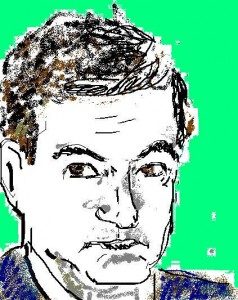 Figure 22.10. Erving Goffman (1922–1982). “We move into the world as individuals, achieve character, and become persons” (Goffman, 1959). (Image courtesy of Wikimedia Commons).
Figure 22.10. Erving Goffman (1922–1982). “We move into the world as individuals, achieve character, and become persons” (Goffman, 1959). (Image courtesy of Wikimedia Commons).